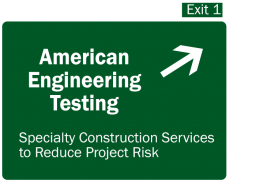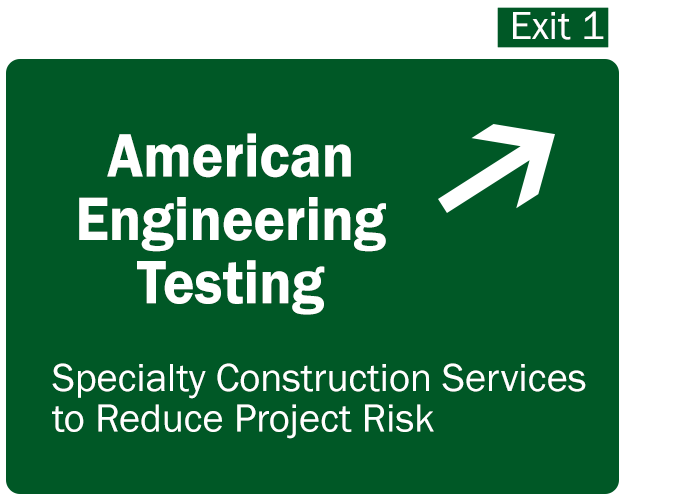
Utilizing their geotechnical engineering capabilities and access to independent laboratories, our team of professionals consult across departments to test, report, guide, and troubleshoot each project. You’ve seen us on projects such as Dresbach Bridge, US Bank Stadium, MnPass, Surly Brewery, so our Construction Services team is fairly well known, but you may not be as familiar with are some of these services aimed at helping manage our partner’s project risks:
- Pre and Post Condition Surveys: these surveys are performed before and after construction to provide visual and written documentation of surrounding structures and to document the (if any) effects the construction has had on them. This is frequently done for projects near sensitive structures (e.g. historic buildings) or in conjunction with vibration monitoring.
- Vibration Monitoring: construction related activities can generate earth vibrations that may or may not affect neighboring buildings. Our engineers document vibration intensities throughout construction and alert their clients in “real time” if the structures monitored are experiencing high vibration levels. This can help prevent structural damage during the construction process, for both their clients and neighbors. We can also review soil conditions and help select pile driving hammers and construction techniques to reduce impacts to vibration-sensitive structures.
- Double-Ring Infiltrometer Testing: during planning and construction, this test is key to determine if in place soils are suitable for designed infiltration gallery or pond. By using two nested rings and recording the volume of water that infiltrates the soil, our engineers can calculate an infiltration rate for the soils.
- Dynamic Pile Testing using the Pile Driving Analyzer® (PDA): this test is used to establish driving criteria for production pile installation. Our engineers perform dynamic pile testing using the Pile Driving Analyzer (commonly referred to as the PDA) and it can be faster and more economical than traditional static load testing. During driving of a pile, the PDA instantaneously displays and records dynamic measurements from strain transducers and accelerometers attached near the top of the pile. For each hammer blow, the PDA processes signals from the gauges to calculate the hammer energy, pile stresses, and pile bearing capacity.
- Floor Flatness Testing: many project specifications require that a testing laboratory perform floor flatness/levelness testing within each floor slab placement to determine how bumpy a floor’s finished surface is to document the construction of flatter and more level concrete floors. This test can save clients both time and money, revealing the possibility for future costs and issues before floor coverings are applied.
With our Construction Services team, you gain access to more than just the five unique services listed above, you gain a partner. Our engineers have worked in the field and have seen thousands of projects. Using their background and education, our team takes in consideration the clients’ budget, timeline, and constructability, focusing on client experience and results.
Read more about our Construction Services


